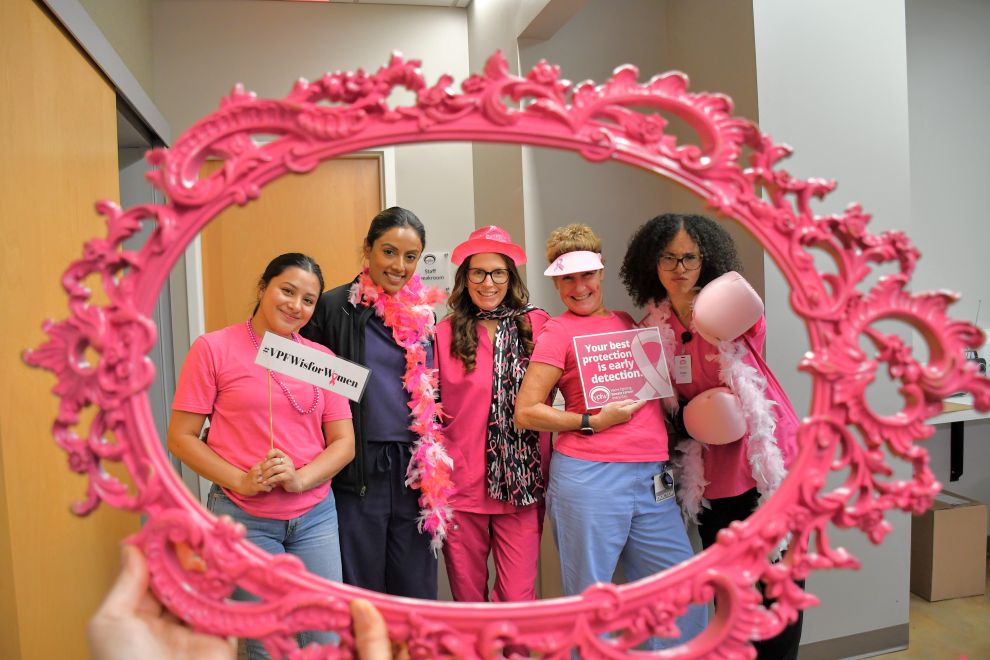Dr. Ashley Uvanni, OB/GYN at Virginia Physicians for Women, addresses common misconceptions with facts about the symptoms, causes and prevalence of miscarriage to help women feel less alone and more hopeful.
If you are reading this, the odds are that you or someone you love has experienced the unfortunate heartbreak of a miscarriage (defined as pregnancy loss before the twentieth week of pregnancy). Or maybe you worry about experiencing a miscarriage in the future. Either way, we know that pregnancy loss can be a difficult topic to discuss, and thus many people rely on assumptions, rather than facts, about miscarriage symptoms, causes, and prevalence.
While the experience of a miscarriage is unique to each person, the lack of open discussion on the topic can leave individuals feeling isolated, with unanswered questions and a misunderstanding of why miscarriage happens and what it means for their fertility outlook.
Let’s explore some common misconceptions about miscarriage.
Misconception #1:
Miscarriages are rare.
Miscarriages are actually quite common. In fact, 12 to 15 percent of clinically recognized pregnancies end in a pregnancy loss. The number of pregnancies ending in miscarriage is believed to be as high as 30 to 60 percent since many women experience a miscarriage before they ever see a provider or even realize they are pregnant.
Misconception #2:
Spotting means you are miscarrying.
Bleeding during pregnancy can be alarming, but spotting is common in early pregnancy and often unrelated to a miscarriage. Spotting can be a sign of implantation bleeding (when the fertilized egg attaches to the lining of the uterus), a vaginal infection, or even a sensitive cervix. However, if bleeding worsens, you should give your OB/GYN’s office a call.
Misconception #3:
Something you have done has caused a miscarriage.
This is not your fault.
The most common causes of miscarriage are not stress, exercise, lifestyle choices, or anything you may have done, as many people believe. The most common cause of miscarriage is a spontaneous genetic abnormality – something that is out of our control. The word spontaneous infers that there is no known cause for the genetic abnormality and that another miscarriage is not inevitable. There’s nothing you can do (or could have done) to prevent chromosomal abnormalities from resulting in a miscarriage (or termination of the pregnancy).
Misconception #4:
There is no way to reduce the risk of miscarriage.
This is also a myth. Here are a few modifiable risk factors that you can alter to help decrease your own risk:
Tobacco use Smoking tobacco has been shown to increase the risk of miscarriage, so reducing or cutting out tobacco can lower your risk.
Caffeine intake Data is currently conflicting on this topic, but recent studies show a modest increase in miscarriage when consuming greater than 300mg of caffeine (about three cups of coffee) a day. Current guidelines recommend less than 200mg of caffeine (about two cups) in pregnancy as this amount has not been shown to increase the risk of miscarriage. You can enjoy your coffee, just in moderation.
Alcohol or drug use One large study showed that women who have four or more drinks a week are 2.65 times more likely to have a miscarriage. Abstaining from alcohol or drugs can be difficult to do on your own. A great place to find local rehab centers, counseling, and support groups is startyourrecovery.org.
Maintaining a healthy weight A body mass index (BMI) greater than 30 percent has been shown to substantially increase the rate of miscarriage. In one study, women who had a BMI greater than thirty had a 59 percent chance of miscarrying as compared to women with a normal BMI, who had a 44 percent chance. Ask your OB/GYN for tips on maintaining a healthy BMI during pregnancy.
Misconception #5:
A miscarriage means you have infertility issues.
This is not usually the case. Miscarriage means the sperm was able to find and fertilize the egg, which is reassuring information when it comes to fertility.
Miscarriage risk does increase with the number of previous pregnancy losses, but rarely exceeds 40 to 50 percent. With one prior miscarriage and no history of prior delivery, the subsequent rate of miscarriage is only 19 to 24 percent. If there has been a successful pregnancy in the woman’s past, the risk of a subsequent miscarriage is as low as 4 to 6 percent.
If you have concerns about infertility, talk to your OB/GYN. You have options. Check out Dr. Jennie Draper’s blog post, “Fertility Treatment Options: A Comprehensive Guide” to learn more. If you are over 40, you might also find Dr. Shannon Brim’s blog post, “Getting Pregnant At 40: FAQs And Tips For Optimizing Your Fertility Health” helpful.
Facts:
Miscarriage is common, you have options, and you are not alone.
If you are struggling through miscarriage or think you may be experiencing one, please reach out to your OB/GYN. Once a miscarriage is diagnosed, there are multiple treatment options. Some include expectant management (allowing your body to naturally miscarry), medications that can help shorten the length of the miscarriage, or surgical management. There is a lot to consider when choosing an option, and your OB/GYN can help you determine which is best for you.
While there tends to be a lack of conversation about miscarriage, you likely have friends and family members who can empathize with your situation and share support. We encourage you to reach out. Experiencing a miscarriage can feel isolating, but please know that you are not alone.
If you have suffered a miscarriage and are in need of support, you may find comfort in the story of one woman who suffered multiple miscarriages and the list of pregnancy loss resources she compiled.





